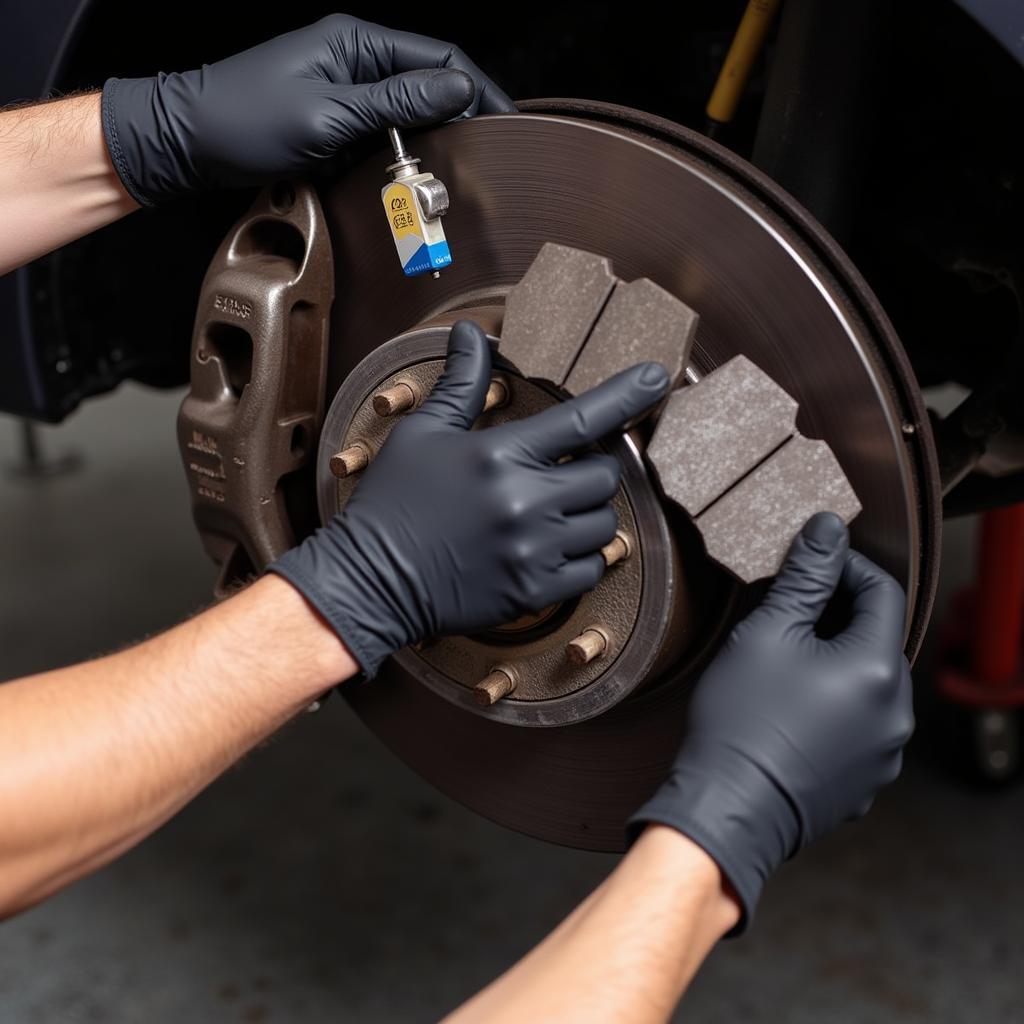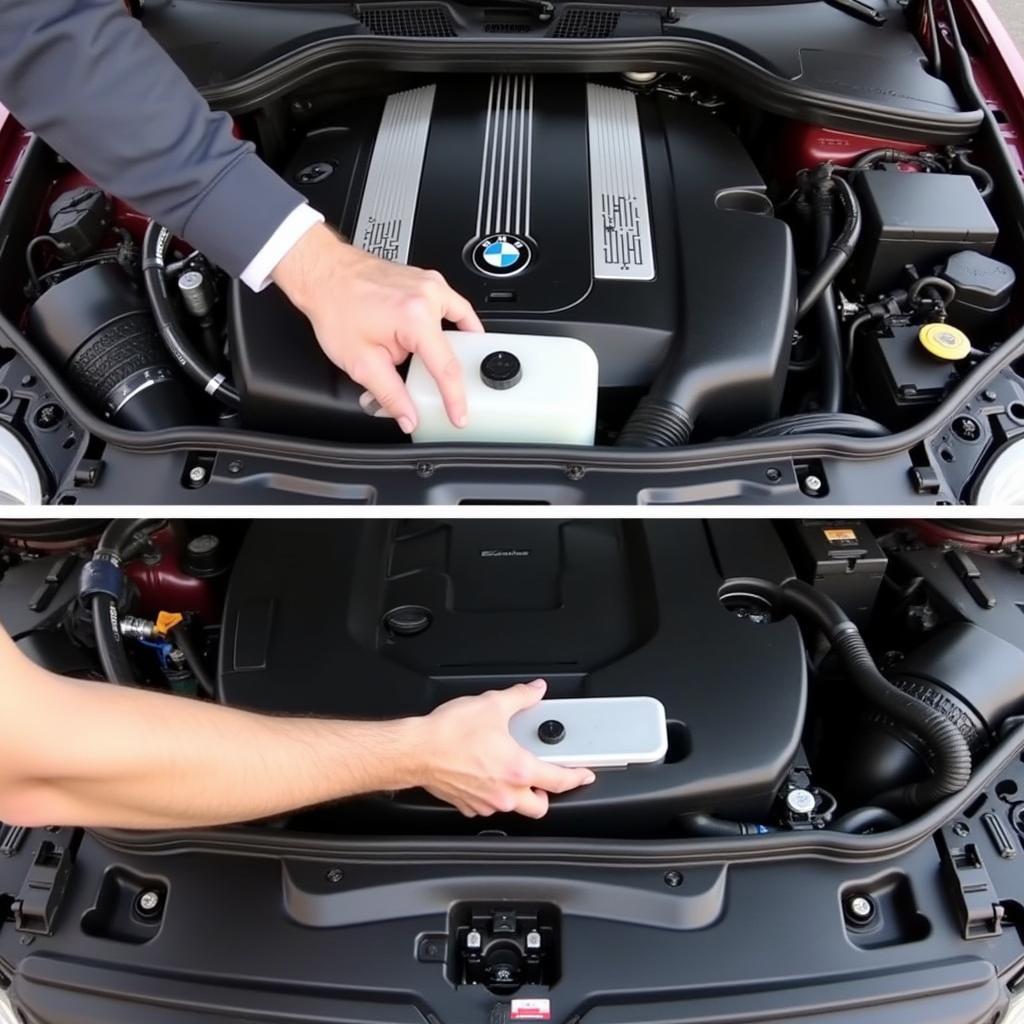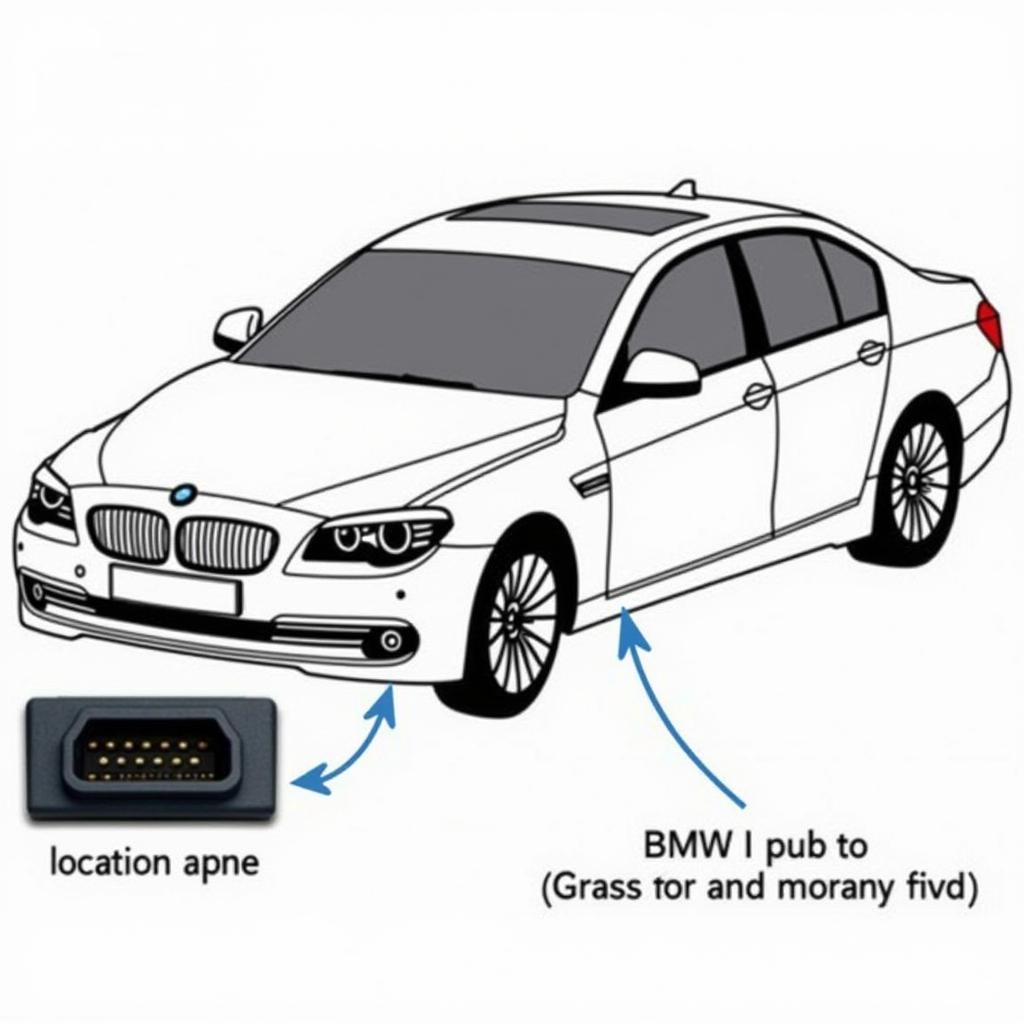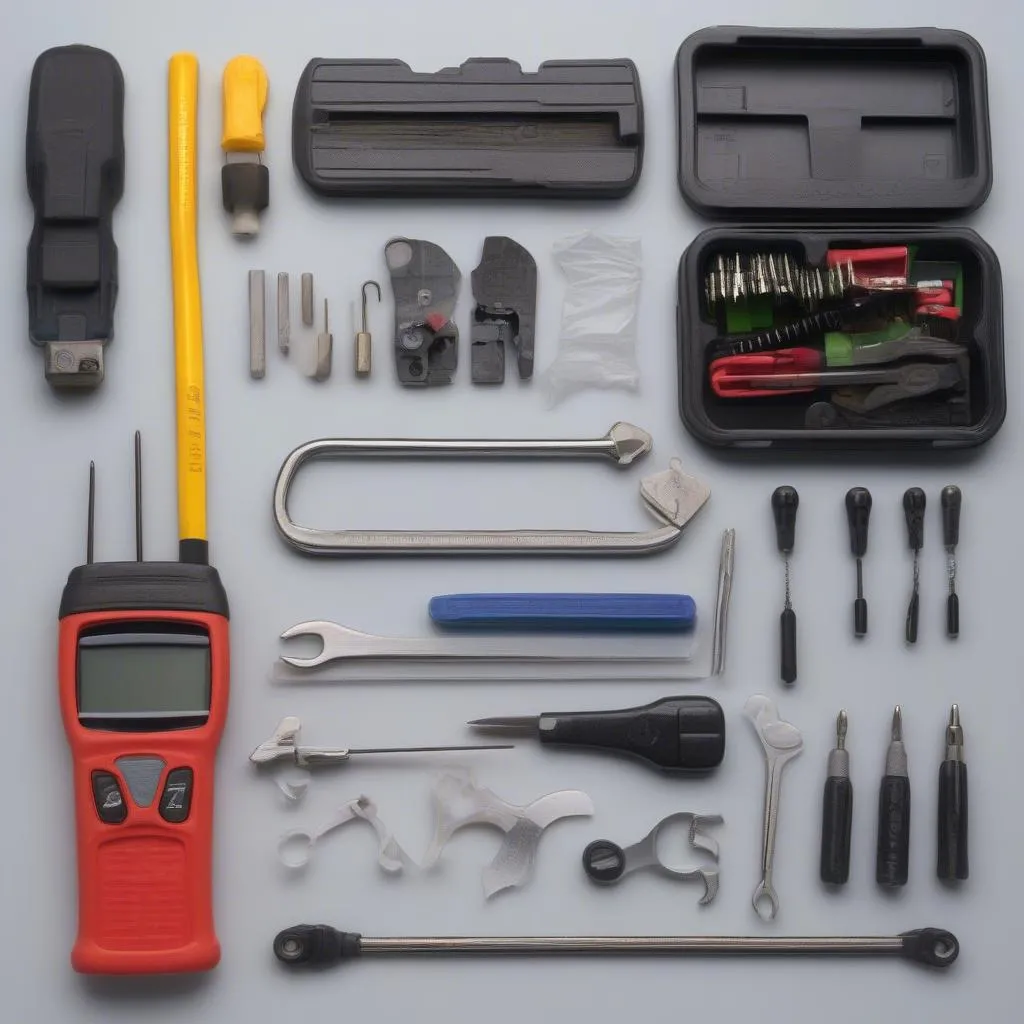The brake warning light on your BMW E90 is a crucial safety feature, illuminating when the car detects an issue with your braking system. While it could signal a serious problem, it can also be triggered by a malfunctioning sensor or reaching the service interval for brake pad replacement. This guide will walk you through the common causes of a lit brake warning light on a BMW E90 and demonstrate how to reset it.
Understanding the BMW E90 Brake Warning Light
Your BMW E90 utilizes sophisticated sensors to monitor the health of your braking system. When the brake warning light on your dashboard lights up, it’s communicating a potential problem that requires your attention.
Common reasons for the brake warning light to illuminate:
- Worn Brake Pads: This is the most frequent cause. BMW E90s are equipped with brake pad wear sensors that trigger the warning light when the pads thin out, indicating the need for replacement.
- Low Brake Fluid: Brake fluid is the lifeblood of your braking system. If the fluid level drops too low, usually due to a leak, the warning light will activate.
- Faulty Brake Sensor: Like any electronic component, brake pad wear sensors can malfunction, leading to a false warning light.
- Issues with the ABS System: Though less common, problems with the Anti-lock Braking System (ABS), such as a faulty wheel speed sensor, can also trigger the brake warning light.
How to Reset the Brake Warning Light on a BMW E90
Important: Before attempting to reset the brake warning light, it is crucial to diagnose the underlying cause. If you’re unsure about any procedure or suspect a serious issue, consult a qualified mechanic or BMW specialist.
Here are the most common methods to reset the brake warning light on a BMW E90:
1. Brake Pad Replacement Reset
If you’ve replaced your brake pads and the light remains on, a reset is required:
- Turn the ignition ON without starting the engine.
- Press and hold the brake pedal for approximately 30 seconds. You might notice the brake warning light flicker or change behavior.
- Release the brake pedal.
- Turn the ignition OFF and wait for a few moments.
- Start the engine and check if the brake warning light has turned off.
 Replacing brake pads on a BMW E90
Replacing brake pads on a BMW E90
2. Resetting After Low Brake Fluid
If the warning light was triggered by low brake fluid, you’ll need to refill the fluid and then reset the system:
- Identify and address the cause of the low brake fluid. This might involve fixing a leak in the brake lines or replacing a damaged component.
- Refill the brake fluid reservoir with the appropriate DOT 4 brake fluid specified for your BMW E90. Refer to your owner’s manual for the correct type and filling procedure.
- Once the fluid level is correct, repeat the brake pedal reset procedure outlined in the “Brake Pad Replacement Reset” section.
 Checking and refilling the brake fluid reservoir in a BMW E90
Checking and refilling the brake fluid reservoir in a BMW E90
3. Using a Diagnostic Scanner
For more complex issues or if the warning light persists after trying the above methods, you may need to use a diagnostic scanner:
- Connect a compatible BMW diagnostic scanner to the OBD-II port located under the dashboard on the driver’s side.
- Turn the ignition ON without starting the engine.
- Access the brake system module using the scanner’s menu.
- Select the “Reset Brake Warning Light” or similar option. The exact wording might vary depending on the scanner model.
- Follow the on-screen prompts to complete the reset procedure.
 Connecting a diagnostic scanner to a BMW E90's OBD-II port
Connecting a diagnostic scanner to a BMW E90's OBD-II port
“Using a diagnostic scanner allows for a more precise diagnosis and reset, particularly when dealing with ABS-related issues,” says Tim Miller, a seasoned automotive electrician specializing in BMW diagnostics. “However, it’s important to have the correct software and understanding of the system to avoid potential complications.”
Conclusion
The brake warning light on your BMW E90 is a critical safety indicator. Understanding its causes and knowing how to reset it can help you address potential issues promptly. While this guide provides general instructions, always remember to consult your owner’s manual for model-specific details and seek professional help if you encounter persistent or complex brake problems. Addressing brake issues promptly ensures your safety and the optimal performance of your BMW E90.
Frequently Asked Questions
1. Can I drive my BMW E90 with the brake warning light on?
It’s strongly advised against driving with the brake warning light illuminated. It indicates a potential issue with your braking system, which could compromise your safety.
2. How often should I replace my BMW E90’s brake pads?
Brake pad lifespan varies greatly depending on driving style and conditions. It’s recommended to have your brake pads inspected every 10,000-15,000 miles and replaced as needed.
3. What type of brake fluid does my BMW E90 use?
BMW E90s typically use DOT 4 brake fluid. However, it’s crucial to consult your owner’s manual or a BMW specialist to confirm the correct type for your specific model.
4. Do I need to disconnect the battery before resetting the brake warning light?
Disconnecting the battery is not typically required to reset the brake warning light on a BMW E90. However, it’s a good practice to refer to your owner’s manual or consult a mechanic for model-specific guidance.
5. Why does the brake warning light stay on after replacing the sensor?
If the brake warning light persists after replacing the sensor, it might require a manual reset using the brake pedal method or a diagnostic scanner.

